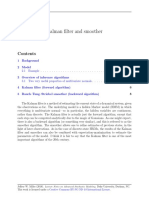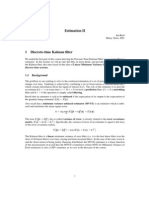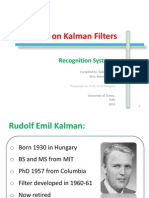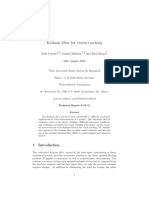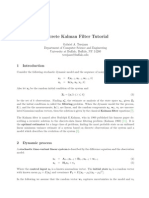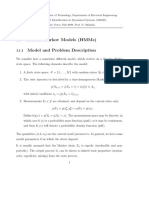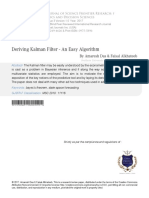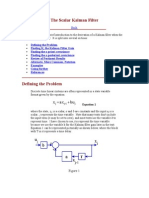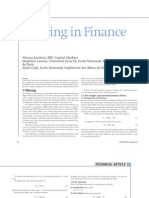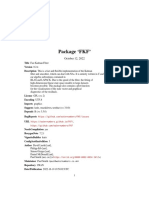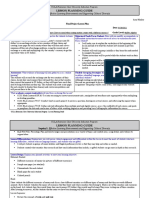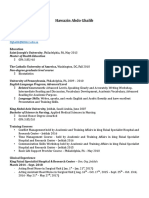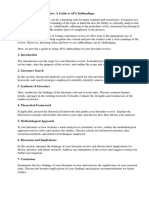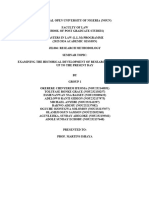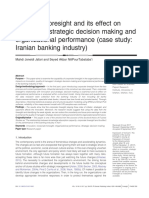0% found this document useful (0 votes)
83 views12 pagesThe Kalman Filter Explained: November 27, 2009
The document summarizes the Kalman filter, which provides estimates of unknown variables over time based on measurements that contain noise. It derives the equations for estimating the state variables and their uncertainties from new measurements in a recursive fashion. The key steps are:
1) Make a prediction of the state and its uncertainty.
2) Update the estimate by incorporating a new measurement, weighting the measurement by its reliability relative to the prediction.
3) Recalculate the uncertainty of the new estimate.
This process is repeated with each new measurement to iteratively improve the estimates. The document also outlines how to calculate smoothed estimates by processing the measurements backwards in time.
Uploaded by
sisarCopyright
© Attribution Non-Commercial (BY-NC)
We take content rights seriously. If you suspect this is your content, claim it here.
Available Formats
Download as PDF, TXT or read online on Scribd
0% found this document useful (0 votes)
83 views12 pagesThe Kalman Filter Explained: November 27, 2009
The document summarizes the Kalman filter, which provides estimates of unknown variables over time based on measurements that contain noise. It derives the equations for estimating the state variables and their uncertainties from new measurements in a recursive fashion. The key steps are:
1) Make a prediction of the state and its uncertainty.
2) Update the estimate by incorporating a new measurement, weighting the measurement by its reliability relative to the prediction.
3) Recalculate the uncertainty of the new estimate.
This process is repeated with each new measurement to iteratively improve the estimates. The document also outlines how to calculate smoothed estimates by processing the measurements backwards in time.
Uploaded by
sisarCopyright
© Attribution Non-Commercial (BY-NC)
We take content rights seriously. If you suspect this is your content, claim it here.
Available Formats
Download as PDF, TXT or read online on Scribd
/ 12









